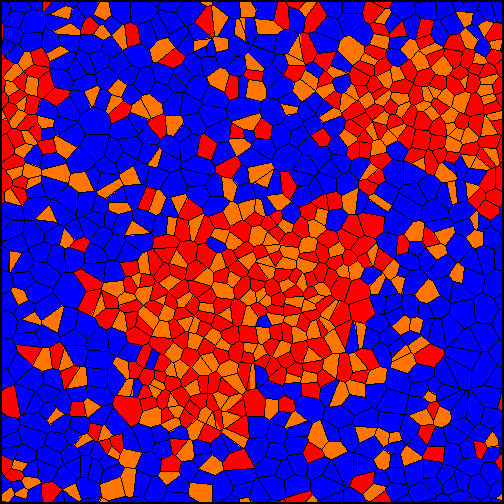
Molecular Dynamics of Biomembranes

We study the lipid organization in biomembranes by means of Molecular Dynamics. Our simulations cover different aspects of membrane organization in equilibrium and nonequilibrium scenarios. The GROMACS Molecular Dynamics package is used, and both atomistic and coarse-grained molecular descriptions are applied in our studies.
 The particular role of cholesterol in lipid bilayers has been analyzed extensively in many of our works. Cholesterol is the most common lipid component in animal cell membranes and it is involved in the formation of highly ordered nano-scale membrane domains called lipid rafts which play an important role in numerous cellular functions. We focus on a related issue, the nano-scale organization of cholesterol-containing membranes.
The particular role of cholesterol in lipid bilayers has been analyzed extensively in many of our works. Cholesterol is the most common lipid component in animal cell membranes and it is involved in the formation of highly ordered nano-scale membrane domains called lipid rafts which play an important role in numerous cellular functions. We focus on a related issue, the nano-scale organization of cholesterol-containing membranes.
Large-scale ordered-disordered liquid phase separation in lipid membranes can be studied with Molecular Dynamics simulations by means of coarse-grained force fields. We are currently investigating the role of lipid composition in such segregation phenomena, as well as the interleaflet interaction in compositionally asymmetric bilayers.
Perturbation of lipid membranes is also of our interest. For example, we have studied the formation of stable pores in membranes subjected to transversal electric fields, a topic of relevant interest in electrochemotherapy treatments for particular kinds of cancer. The effects of some chemical compounds like DMSO or chloroform in the structure and organization of lipid membranes are also being analized by means of atomistic and coarse-grained simulations.


